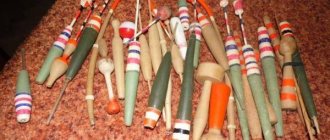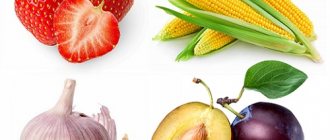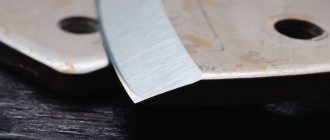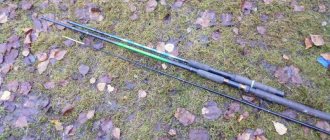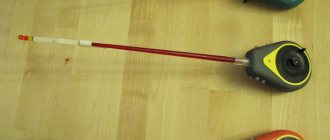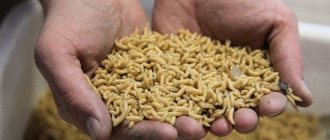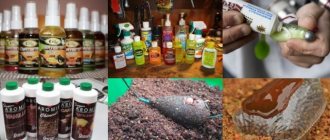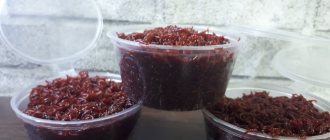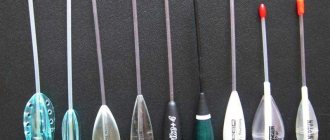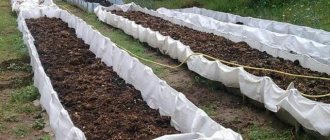To prepare many fishing feed mixtures, additives are used to stimulate a high level of appetite in fish, thus increasing the catch rate. Molasses for fishing is just such a product, which has the excellent property of luring fish to the baited fishing point. Fishermen learned about these qualities of the additive relatively recently, no more than two decades ago. But we can already confidently note the fact that adding molasses to bait is a very common technique that seduces fish with a sweet tooth, the list of which includes such popular prey items among fishermen as crucian carp, bream and roach.
The purpose of this article will be to introduce the fisherman to this type of feed additive, and we will also teach how to prepare a sweet mass from ordinary culinary products and correctly add the product to the feed mixture, making an effective bait mix.
What is molasses
Although the term is well-known in fishing circles, and the use of molasses for fishing is already commonplace, few anglers are thoroughly aware of the origin of this sweet and viscous, brown-black mass. The sweet taste and specific smell have a first-hand effect on stimulating the appetite of fish. The sweet substance itself is a by-product of sugar production during the processing of sugar beets at sugar refineries. Subsequently, additives are prepared from these production wastes and used in feed for cattle and pig farming.
To a greater extent, this product is familiar to the average person as beet molasses, which can be found in stores specialized in livestock feed, poured into polyethylene canisters with a volume of 5-10 liters. The composition of the syrup consists of the following components: water - 25%, nitrogenous compounds -10%, carbohydrates - about 60%, ash -10%. Based on these proportions, we can safely say that molasses is a fairly high carbohydrate product that can actively stimulate appetite, which, in principle, is its main advantage in livestock farming and the fishing industry.
Additive composition
- water - 20-25%;
- carbohydrates - 60%;
- ash - 8-10%;
- nitrogenous compounds - 9-10%.
Carbohydrates give the fish that have eaten the food an influx of energy and strength. Ash has a laxative effect, thanks to which the fish swallows a lot of complementary food without feeling full.
Molasses dissipates well in water, spreading a specific smell that can attract a considerable number of fish.
Molasses groundbait is quite easy to prepare yourself.
- sugar;
- water.
We dilute sugar in water, proportions 2:1 and place on low heat. The syrup is brought to a boil and boiled for about 5 minutes.
It is important to prevent the mass from being overcooked, since instead of an effective substance to add to the bait, you can get simple sugar caramel. However, the situation can be saved by adding boiling water at a ratio of 1:2. After the sugar dissolves, you get the same molasses.
The advantage of adding molasses is that the prepared bait sours much more slowly in warm weather, due to the fact that sugar is an excellent preservative.
Feed molasses, based on its constituent substances, comes in several types:
- Corn molasses - this type of molasses uses starch that is obtained by processing corn. It has a light brown color and a thick, syrupy consistency. It is especially used for catching carp fish, which is due to its high sugar content.
- Copra molasses is a consistency to which ground coconut shells are added. Such components make the bait looser and lighter, which allows it to dissolve better in water, and the special smell can attract fish that are located quite far from the fishing spot.
- Beet molasses has a longer cooking process than sugar. Beet juice diluted in water 1:2 is infused for several hours. Next, place on low heat and cook until a thick consistency is formed. In order for the taste to become more intense, as well as to obtain greater thickness, it is preferable to add 4-5 tablespoons of sugar.
Molasses, prepared at home, can be used to prepare dry complementary foods or in its pure form due to its good solubility in water.
It is worth remembering that in some conditions the bait may not bring the desired result.
Molasses is a by-product of sugar production, most often called beet molasses.
Molasses usually appears as an opaque brown or brown liquid. It has a certain smell, which is characteristic of sugar products, and also has a bittersweet taste.
This product can be easily dissolved in water of any temperature.
Finding molasses for fishing is not difficult, since it has been used by fishermen for a long time and is therefore sold in almost any fishing store. It can be offered both in pure form and already dissolved. Most often it is added to some additives in the bait.
Using such a well-known supplement, you can achieve the best results in the shortest possible time. This is why molasses has become so popular among both novice fishermen and real professionals.
If you have never used this opportunity, then you can try it right now, because making such a useful additive for complementary feeding is quite simple and you will have to spend very little time and effort on it. In addition, you don’t need any special equipment to make molasses. Everything you need can be easily found in any standard kitchen.
Why add molasses to bait?
Molasses for fishing has the primary goal of activating the appetite of fish. These conditions are achieved by the specific smell of the syrup and its rather strong and even sickly sweet taste. Thus, the substance can be considered a full-fledged natural attractant with a sweet focus, which perfectly collects many types of carp fish at the feeding point, on the bait or at the feeder.
Important! In addition to its taste, molasses in bait successfully acts as a binding element, having a high degree of viscosity.
By using the volume of additive added, anglers effectively control the viscosity of the bait mixture, regulating the solubility of the mixture in water and its friability. Another useful property is the richness of the color of the syrup. As with viscosity control, manipulation of the additive volume affects the color of the feeding mixture, making light mash much darker than its original color.
How does molasses affect fish?

Particular attention should be paid to the effect of syrup on stimulating appetite and digestion of fish. The sweet carbohydrate mass, entering the intestines of fish, causes a specific reaction, accelerating the digestion process. Molasses is a kind of laxative for fish. Food digested at a high speed does not linger in the digestive tract, but is quickly excreted and thus does not saturate the trophy. The fish, having tasted the nutritious mixture with syrup, constantly feels an increase in appetite, again and again coming to the point with the delicacy served in the hope of being satisfied again.
Thus, it becomes attached to the bait supply zone for a long time, without leaving the fishing point over long distances, and reclassification of the fish into a trophy becomes only a matter of time and patience of the angler. As a conclusion, we state the fact that the aroma of molasses, together with its effect on the digestion of fish, makes the product an effective and efficient means in the prepared bait mixture, which is successfully used by modern fishermen who catch peaceful species of carp fish.
What time of year is best to use
Regardless of the method and type of preparation of molasses, the priority season of the year for using the additive is considered to be summer, when fish largely feed on plant foods and readily respond to the sweet taste. You can also note the practicality of using it at the end of spring and the beginning of the autumn period of the year, when the water in reservoirs is already warmed up or has not yet completely cooled down.
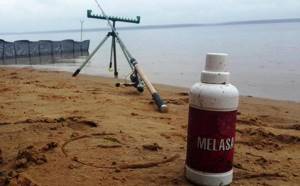
In winter, the quality of fishing with food and the addition of molasses to its composition is not so high and winter fishermen rarely use such flavorful, sweet-oriented complementary food, using neutral and not strongly flavored food. Consequently, based on the practical experience of using syrup, one can notice a predisposition to use it in open, already sufficiently warmed and temperature-stable water, which is what you should adhere to when planning fishing strategies using bait with molasses additives.
Preparation of beet molasses
The difference in the preparation of this molasses is the preparation time and the method of extracting the syrup:
- Having chosen larger beets (two pieces), grate them.
- Pour water over the grated mixture (two parts beets to one part water).
- Let it sit overnight and release all the juice.
- The next morning, drain the water and squeeze out the remaining moisture from the cake. If you put beets through a juicer, you don’t need to fill them with water. Simply dilute the concentrated juice with water.
- You can add sugar to the resulting liquid.
If you want a more concentrated substance, then simply dilute it with water not in a 2:1 ratio, but in a 3:1 ratio.
How much molasses to add to bait?
When forming feeding mixes, the issue of the amount of sweet taste added to complementary foods is important. It is worth noting that in the classic version, before adding molasses to the feed, it is diluted with water taken from the reservoir in volumes of proportions or a ratio of 1 to 5. After which this liquid and sweet consistency is used as a regular moisturizer, mixing complementary foods to the desired viscosity . You can also mix mixed drinks with concentrated undiluted molasses. In this case, about 50-70 grams of pure syrup will be required per kilogram of bait. As a rule, in order to get a greater effect, large batches of feeding mixtures are prepared using molasses, where, for example, 250 grams of syrup are added to 4 kg of feed.
Important! There is no need to be afraid of volumes or worry about their damage. After all, sweet syrup is an excellent preservative that slows down the oxidation of feed, and therefore its souring and the appearance of mold, even in hot weather.
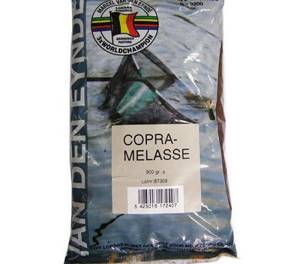
An excellent example in this regard is the dilution of purchased feed by mixing with a product such as copra molasses, which contains a mixture of syrup and coconut fiber that slows down the spoilage of the product and keeps it in working condition for a couple of days.
Preparation of molasses sugar
It’s quite easy to prepare this syrup at home in the kitchen, just:
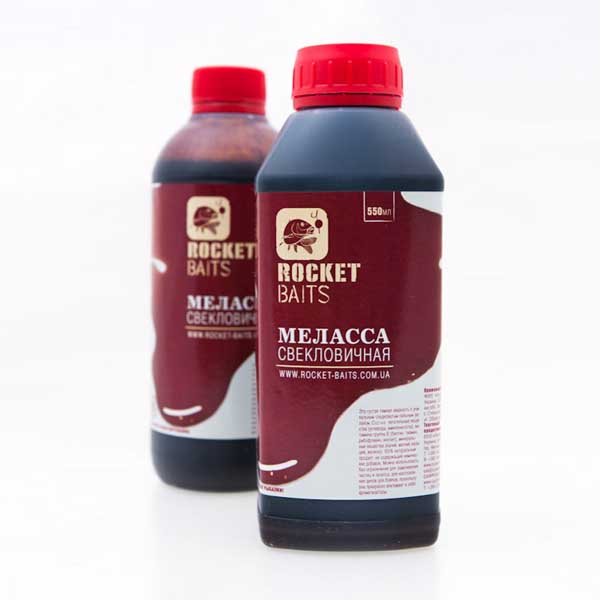
- Mix two parts sugar and one part water.
- Cook this mixture over low heat for about 5 minutes.
A common mistake is to bring the mass to a density that, after cooling, will become the sugar caramel that almost everyone cooked in childhood.
However, if you catch an “onlooker”, then don’t be upset, you can fix it:
- pour boiling water over the caramel (1:2);
- stir and get molasses no worse than the one that was “missed”.
Another way to make sugar syrup:
- pour one liter of water into the pan;
- bring water to a boil;
- pour in 650–750 grams of sugar;
- add 5-10 grams of citric acid to the pan (to avoid crystallization of the syrup);
- simmer this brew over low heat for 15–20 minutes;
- The result should be a thick substance, in no way inferior to store-bought molasses.
How to properly mix molasses into bait
Due to the fairly high viscosity of the product, there are a number of difficulties in mixing mixes with syrup additives. Of course, a substance diluted with water is easier to mix with the dry fraction of the feed. The syrup itself is easier to dissolve in slightly warmed water. Using water from a reservoir, you can simply expose a small volume of liquid to direct sunlight until it warms up, or you can deliberately heat the water over a fire.
Important! When adding undiluted product, you must use a mixer or screwdriver using ordinary culinary whisks.
The use of mechanized equipment helps to distribute the viscous product more evenly, thus saturating the entire mixture, making it homogeneous in composition. Even molasses prepared with your own hands with certain viscosity parameters needs thorough mixing. As a rule, after mixing, the feed is allowed to brew for about half an hour, after which the mash is moistened and thoroughly mixed again, leaving in this state for 6-10 hours for complete impregnation and aromatization with syrup. Before use, all that remains is to refresh the mix with intensive stirring and then use it for its intended purpose, using it as feeder bait, loading it into feeders, or directly feeding it by casting it by hand or with a slingshot into a pond.
How to make molasses with your own hands
Despite certain doubts among some fishermen, preparing molasses for fish at home is not at all difficult. For these purposes, you will not need any exotic or expensive products. You will probably find most of the ingredients suitable for making syrup on the shelves of your own kitchen or can easily purchase them in the nearest supermarket at a relatively reasonable price. Our further recommendations with examples of the simplest homemade molasses compositions will help you select the appropriate recipe.
Analogues of real molasses
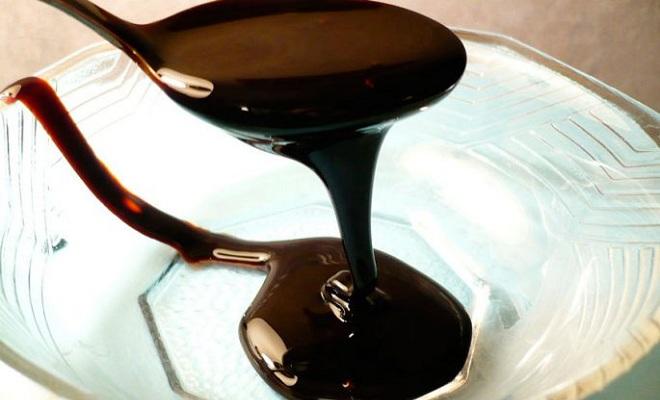
Having noticed the high efficiency of using natural beet molasses, fishermen began to experiment with the production of a composition similar in parameters to real syrup, which, as a result of some practical experiments, led to success. The sweet mass was additionally flavored with spices such as cinnamon or coriander, improving the qualities that attract different types of fish. Today, home-made molasses may well become an alternative to a purchased attractant, so we advise anglers to take note of several recipes for preparing the product themselves. It can be stored for up to one year in a regular refrigerator without fear of spoilage and added to bait as needed based on the planned fishing strategy.
Beet molasses
Even beetroot can be produced independently at home. This process requires ripe sugar beets, a small amount of sugar and water. Initially, the beets are cut into small pieces and the juice is squeezed out of it using a household juicer. In its absence, the beets are grated and pressed through cheesecloth, collecting the sweet liquid in a container. Having collected the required volume, it is diluted with water in a ratio of 2 to 1 and begins to be heated on fire.
First add 1-2 tablespoons of sugar to the liquid per liter. Immediately after the mixture boils, reduce the heat to a minimum, constantly stirring the brew for another 2-3 minutes, then turn off the gas and allow the mixture to cool. The result is a thick, brown syrup similar to natural molasses.
Honey molasses
Honey molasses is prepared according to the following recipe consisting of honey, brown sugar and water. Take three tablespoons of sugar per spoon of honey and mix the products thoroughly. After kneading, add three volumes of water and put on fire, bringing the mixture to a boil. After boiling, the brew is kept on fire for five minutes with constant stirring of the composition. Next, the broth is cooled, obtaining a viscous, aromatic and sweet product.
Sugar syrup
In the absence of honey, you can get by by preparing a syrup from water and sugar. In this case, one part of water will require two parts of sugar. In order for the sugar to quickly dissolve, the water is heated and the solution is intensively stirred, obtaining a yellowish syrup. After mixing and complete dissolution, place the container on the fire and, after boiling, keep it on the gas for another two minutes. The syrup will thicken and turn brown. The acquired dark color indicates the end of cooking of the product. All that remains is to pour the molasses into a pre-prepared measuring cup and store it in the refrigerator. This composition is excellent for fishing, the target of which is bream and carp.
Fruit molasses
Fishermen are addicted to making molasses from excess fruits containing a high percentage of sugar. These types of products include grapes, pears, sweet apples, apricots, mulberries or figs. To make molasses, you need to first squeeze the juice out of the fruit. It is this sweet liquid that will become the derivative of the product necessary for fishing. Having collected a certain volume of juice, all that remains is to cook it on a gas stove, resulting in a thick and sweet natural mass with the smell of the original fruit with the qualities and characteristics of molasses. As a rule, regardless of the type of juice, it begins to thicken within ten minutes after the liquid boils, after which the fire is turned off and the syrup is allowed to cool and thicken at room temperature.
Molasses for fishing - composition, methods of use, preparation and prices
Molasses is a liquid mass that is a by-product of sugar production. It has the consistency of a thick viscous syrup, a fairly strong, specific odor and a dark color. Another name for this liquid is molasses.
Molasses has a fairly wide range of applications. It is used in cooking, as a natural sweetener enriched with useful substances, in the preparation of feed additives for animals, in fishing, and also in the production of animal feed.
Molasses for fishing
Currently, molasses is widely used in fishing and is used as additional complementary food. Due to the high content of carbohydrates, its properties are such that fish that have eaten molasses feel an increasing feeling of hunger, which forces it to eat even more of this complementary food.
Molasses also dissolves easily in water, spreading a specific odor that attracts a large number of fish. In most cases, molasses is used as complementary food for fish species such as carp and bream.
Compound
Molasses contains the following substances:
- Carbohydrates, in an amount of more than half of the bulk. These substances are very energetic and cause a surge of energy and strength in fish that have eaten complementary foods.
- Ash. Due to its laxative properties, the content of this substance causes the fish to eat more and more food without feeling full.
- Nitrogen compounds.
- Water.
Mode of application
The method of preparing molasses intended as complementary foods is quite simple: you need to dissolve molasses in warm water in a 1:1 ratio. The resulting mixture should be generously soaked in dry complementary foods and allowed to brew for several hours.
The last manipulation is essential to ensure that the liquid properly saturates the dry food particles. It is also quite acceptable to use molasses in liquid form.
In this case, the product must be poured into the water in the place where fishing will be done.
Both methods have no fundamental differences and are equally effective. Molasses can be added to water not only in the summer, but also in winter. It dissolves perfectly in ice water without losing its fish-attracting properties.
Percentage increase in bite when adding molasses to bait
When adding molasses to complementary foods, the bite percentage increases significantly, at least up to 50%. The fish has an excellent sense of smell and is able to smell the specific smell of molasses even at a fairly large distance.
And the fact that molasses dissolves well in water and spreads over a considerable distance thanks to the current gives a chance to attract as much prey as possible.
However, we should not forget that sometimes even this additive cannot guarantee a large catch due to the presence of such possible circumstances as unfavorable weather conditions and other similar factors.
Prices
Due to the effective action of molasses, it is becoming increasingly popular among fishermen, both amateurs and professionals.
Accordingly, the prices for this product are quite high.
Depending on the purity and quality of the bait, the presence of various flavoring additives in it and the manufacturing plant, its cost can vary from 200 to 800 rubles per 0.5 liter.
Also, prices may vary depending on the country of origin.
An additive imported from abroad has a much higher cost than a domestic product.
However, the quality and composition of molasses in both cases are most often identical.
It is also quite possible to prepare complementary foods with your own hands. This process is very simple, does not require any industrial technology, and the final product has the same properties as factory-made molasses.
Corn molasses for fishing
Corn molasses is mainly used for feeding fish of the carp family due to its high sugar content.
To produce this type of molasses, starch obtained during the processing of corn is used.
Corn syrup is notable for the fact that it is used not only in the food industry, but also in the field of pharmacology, for example, in the production of various medicinal syrups.
The appearance of molasses made from corn is somewhat different from others: it has a thick, syrupy consistency, light brown color, close to the color of natural honey, a pronounced aroma and a rich, sweet taste.
Due to the high content of glucose and maltose, which are an integral part of the diet of any living creature, corn syrup is a very common additive in the production of complementary food for fishing.
It significantly improves its taste, and thanks to its pronounced smell, it allows you to attract as many fish as possible.
Copra molasses for fishing
Copra molasses is a mass with the addition of ground coconut shells. When this substance is added to complementary food for fishing, it slightly changes its properties: it makes it looser and lighter.
Thanks to these properties, complementary foods dissolve better in water, spreading a peculiar smell that attracts fish over a fairly large distance.
Modern manufacturers produce ready-made complementary foods with the addition of copra molasses in both liquid and dry form. However, it is quite possible to prepare this mass yourself, which will save a significant amount.
When preparing complementary foods using copra molasses at home, you should remember that the coconut mass must be sifted through a sieve, since large particles are quite often found in this mass.
Preparing molasses for fishing
Making molasses with your own hands is quite simple. To do this, mix sugar and warm water in a 2:1 ratio and place on low heat or a water bath. The syrup must be brought to a boil and allowed to simmer for about five minutes.
After the mass acquires a light brown tint, it must be removed from the heat and allowed to cool.
It is necessary to ensure that the mass is not overcooked and does not acquire excessive density, otherwise, instead of an effective complementary food for fish, you will end up with ordinary sugar caramel.
However, in this case it is also quite possible to prepare complementary foods that have quite effective properties. Caramel should be poured with boiling water at a ratio of 1:2 and, after waiting for it to completely dissolve, use it in the same way as regular molasses.
Preparing beet molasses for fishing
The procedure for preparing beet molasses is a more complex process than cooking sugar.
Grate two large beets, add the required amount of water in a 2:1 ratio and let it brew for some time. Next, squeeze the beet pulp well and strain the water through a fine sieve or cheesecloth.
You can also put the beets through a juicer, in which case there is no need to add water. The resulting concentrated juice or beet infusion should be placed on low heat and cooked until thickened.
During the cooking process, the mass will acquire the necessary consistency and specific smell.
You can add a few (no more than five) tablespoons of sugar to the juice, this will give the molasses a richer taste and make the mass somewhat thicker.
In this case, you should ensure that the consistency of the molasses does not become too thick, that is, it should be cooked for less time than without using sugar.
Molasses prepared at home can be used both in the preparation of dry complementary foods and in liquid form, since it dissolves perfectly in water.
This molasses can be poured directly into the water where fishing will be done, in the so-called pure form, or you can prepare a concentrated solution from it, dissolving it in water in a ratio of 1:3.
Molasses is highly valued by both amateur fishermen and professionals in this field.
Its qualities and properties make it possible to attract a large amount of “prey” to the fishing site, mainly large species of fish.
However, we should not forget that in some cases the additive may be ineffective, for example, when used in unfavorable weather conditions that are not suitable for fishing, as well as when dissolved in water that has a high degree of pollution.
Source: https://fastcarp.ru/zametka/fishki/melassa.html
Molasses for carp
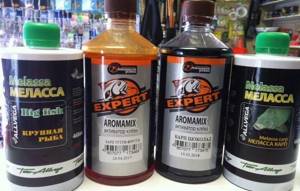
Molasses for carp has become an important ingredient in effective complementary feeding. For large fish, use natural beet molasses by adding it to purchased or homemade bait compositions in concentrated form or pre-dissolved with water.
Important! Food with the addition of syrup does not sour and is well suited for multi-day carp fishing, remaining not only fresh, but also in the same taste parameters and consistency, without requiring constant additions of fresh ingredients.
Recently, effective methods and technologies for preparing instant carp boilies from molasses have emerged. Plastic and aromatic boilies are used in rigs with hair rigs when fishing with bottom gear and float rods.
Fishing molasses
Molasses (treacle) is a by-product from the manufacture of sugar. It looks like honey. The color can be either dark brown (beetroot) or light brown (corn).
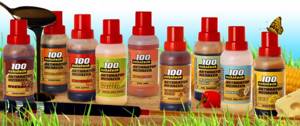
Molasses has a wide range of uses for:
- cooking;
- production of combined feeds;
- vegetarians love to add it to food because of the high content of calcium, vitamins and microelements;
- Europeans feed molasses to livestock and thin animals;
- It is also used in fishing as an additive to feeding.
From molasses, bioengineers have learned to prepare:
- During fermentation with access to oxygen, technologists obtain: oxalic, fumaric, gluconic, citric and acetic acid;
- During fermentation without access to oxygen, butyric, propionic and lactic acids are produced. The production of ethyl alcohol is also not overlooked.
Prices for molasses for fishing
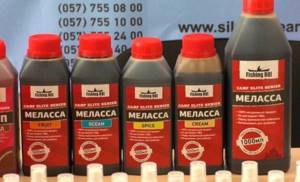
If the process of preparing molasses seems complicated and hectic to the fisherman, then, of course, purchasing the product will be an ideal option. In the continuation of the article, I would like to orient our reader on the price parameter, giving definitely valuable advice on planning a purchase. As a rule, in fishing stores on the shelves in the attractants department you can see molasses in small, up to one liter, containers at prices from 200 to 600 rubles per piece.
Of course, this volume is quite enough for one-day fishing with intensive feeding technology. But in order to save money, we advise you to find specialized stores at sugar refineries or points of sale of additives for farm animals, where you can often find molasses as a product offered for purchase. Here the capacity will be about 10 liters, and its price will not exceed 800 rubles. One measuring bucket of molasses is now enough for several multi-day fishing trips, and excess syrup can be saved for future use, and we will talk about how to do this in the final chapter of our article.
Molasses storage
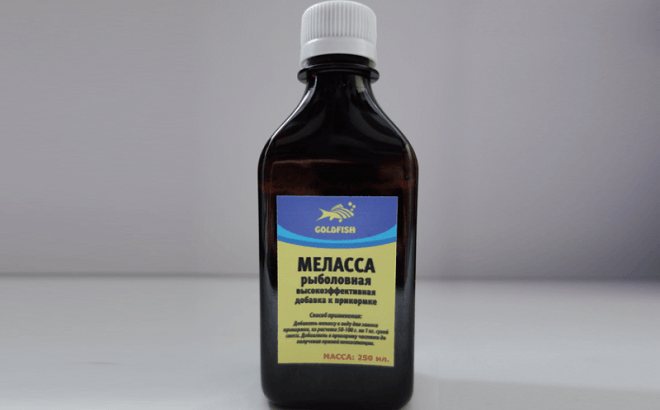
For the angler's information, molasses can be stored at home using two methods. The best known method is to store a printed container with a product on the lower shelves of the refrigerator, where the syrup, without losing its qualities, can be kept for an indefinite period without any kind of spoilage. It may come as a surprise to some fishermen that molasses can be stored at room temperature and remain usable for a couple of years.
But we note this feature that the syrup diluted with water does not spoil for 3-4 days, after which it will begin to ferment, and the bait itself with molasses additives is preserved, remaining suitable for attaching and feeding fish for 2-3 days.
Homemade beet molasses
Nov 15 • Uncategorized • 70 Views • No comments on the post Beet molasses at home
Contents
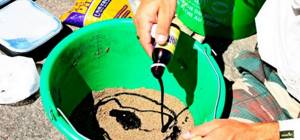
Molasses is quite often used as an additive to bait mixtures for fishing to improve the nutritional value and give the bait mixture an attractive aroma. As a rule, a similar product is used for catching carp, bream and roach. To all this, it should be added that the volume of catch will seriously please you, and the investment will be justified.
Using molasses for greater fishing efficiency is considered a justifiable move. Unfortunately, the product is expensive and buying it constantly is expensive for the family budget. In this regard, the article will tell you how to make the mixture yourself at home.
